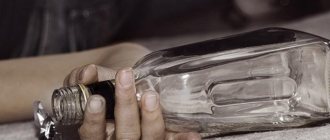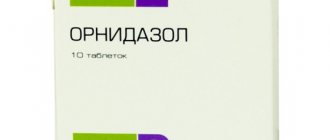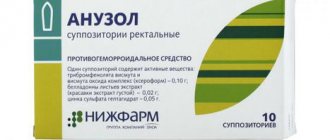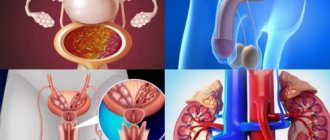Compound
In 1 tablet: metamizole sodium - 0.3 g, phenobarbital - 0.01 g, naproxen - 0.1 g, codeine - 0.008 g, caffeine - 0.05 g.
Excipients: talc, potato starch, magnesium stearate.
Composition of Piralgin in Latin:
Metamizolesodium - 0.3 g, phenobarbital - 0.01 g, naproxen - 0.1 g, codeine - 0.008 g, caffeine -0.05 g. Adjuvans: talc, amylumsolani, magnesium stearate.
Pharmacodynamics and pharmacokinetics
Pharmacodynamics
Piralgin is a combination drug that has the properties of non-narcotic analgesics and NSAIDs . The analgesic and anti-inflammatory effect is manifested due to the content of naproxen and metamizole sodium .
The analgesic effect is enhanced by codeine , which blocks opiate receptors and changes the perception of pain. In addition, codeine, by suppressing the excitability of the cough center, has an antitussive effect. It has a less depressant effect on the respiratory center than morphine and is less likely to cause nausea and vomiting. The antitussive effect alleviates the condition of colds.
Caffeine dilates blood vessels in the brain, skeletal muscles and heart. Eliminates drowsiness, increases physical performance and blood pressure during hypotension . Caffeine relieves headaches . By increasing the permeability of blood barriers, it increases the bioavailability of other components of the drug, which enhances their therapeutic effect. Phenobarbital has a sedative effect and increases the effectiveness of metamizole and naproxen . The duration of action of the drug is 5-6 hours.
Pharmacokinetics
All components of the drug are well absorbed. Metamizole sodium is hydrolyzed in the intestinal wall. Its active metabolite is 50-60% protein bound. Metabolites are excreted by the kidneys.
Caffeine has a half-life of 6 to 10 hours. Excreted by the kidneys. Codeine binds to proteins in small quantities. Metabolized in the liver. Excreted by the kidneys.
Bioavailability of naproxen is 95%. The half-life is 12-14 hours. It is mainly excreted in urine and in small quantities in bile.
The bioavailability of phenobarbital is 80%. Binds to proteins by 50%, penetrates the placenta. Metabolized in the liver. Excreted by the kidneys.
How Piralgin will help
Everyone is familiar with Pentalgin-N - also known as Piralgin. This is a combination drug. Its properties are characteristic of non-narcotic analgesics and non-steroidal anti-inflammatory drugs (NSAIDs).
Components of Piralgin and its pharmacological action
Components of Piralgin and its pharmacological action
What is the composition of this medicine? It contains not only analgin (metamizole sodium), but also active substances such as naproxen, caffeine, codeine and phenobarbital:
- matamizole sodium – has analgesic, anti-inflammatory and antipyretic effects. It is used as an anesthetic for headaches, dental, and menstrual pain. Prescribed for inflammatory processes and acute infectious diseases: pneumonia, pleurisy, lumbago, myocarditis, herpes zoster, tumors and other diseases. Metamizole sodium, when taken orally, is quickly and completely absorbed, destroyed in the liver and excreted through the kidneys;
- naproxen – has analgesic, antipyretic and anti-inflammatory effects. Suppresses pain caused by various diseases of the musculoskeletal system. It is used as an adjuvant for infectious and inflammatory diseases of the ENT organs, as well as for primary dysmenorrhea, adnexitis, headache and toothache. Unlike other anti-inflammatory drugs, naproxen does not cause damage to the gastrointestinal mucosa and is well tolerated by patients without any side effects. About 95% of a naproxen dose is excreted in the urine, and slightly less than 5% is excreted in the feces;
- caffeine – has a psychostimulating, cardiotonic and analeptic effect. Strengthens and regulates excitation processes in the cerebral cortex, in the vasomotor and respiratory centers, increases physical and mental performance, temporarily eliminates drowsiness and fatigue. It is used for diseases such as migraines, urinary incontinence, poisoning with hallucinogens and drugs. Well absorbed in the intestines, and excreted mainly by the kidneys;
- codeine – has an analgesic, antitussive and antidiarrheal effect. Relieves pain from injuries, renal and hepatic colic, diarrhea, paroxysmal cough, cancer;
- phenobarbital - used as a sedative, anticonvulsant and hypnotic drug. Prescribed for mental and behavioral disorders that cause sedatives and hypnotics, epilepsy, insomnia, paralytic syndromes and other peripheral vascular diseases. Phenobarbital is completely absorbed by the small intestine and excreted from the body by the kidneys.
All of the above components of Piralgin enhance each other’s action and actively work together. Caffeine and codeine quickly relieve swelling of the mucous membrane, stop lacrimation and rhinorrhea.
Naproxen with analgin help cope with pain and fever, have an anti-inflammatory effect, and phenobarbital calms the nervous system.
These unique properties make the drug Piralgin necessary for the first aid kit both at work and at home.
Indications for use and dosage of Piralgin
Indications for use and dosage of Piralgin
According to the instructions for use of the drug, Piralgin is recommended for use in the following cases:
- moderately severe pain syndromes of various origins;
- pain in joints and muscles;
- headaches, dental and menstrual pain;
- pain caused by radiculitis and neuralgia;
- feverish condition;
- colds;
- pain caused by various inflammatory diseases.
The drug is taken orally, 1 tablet 2-3 times a day after meals. Children over 12 years old are given half a tablet 2-3 times a day. The drug is not recommended to be taken as a pain reliever for more than 5 days without a doctor's prescription.
Contraindications, side effects and precautions
Contraindications, side effects and precautions
Piralgin, of course, has its own contraindications. The drug should not be used in patients with hypersensitivity to the components that make up the drug. It is not recommended to use Piralgin in such cases as:
- peptic ulcer of the duodenum and stomach in the acute stage;
- severe renal and liver dysfunction;
- bronchospasm;
- increased intracranial pressure;
- systemic blood diseases;
- traumatic brain injury;
- heart rhythm disturbance;
- high blood pressure;
- acute myocardial infarction;
- glaucoma;
- pregnancy and lactation (if there is a need to use the drug in a nursing mother, then in this case it is necessary to resolve the issue of stopping breastfeeding);
- age up to 12 years (if the child has not reached this age, the drug is taken only under the supervision of a pediatrician).
Contraindications, side effects and precautions
The drug should be used with caution in patients with impaired renal and liver function and in the elderly. In such cases, Piralgin should be used exclusively as prescribed by the attending physician and under his supervision.
While taking the drug, undesirable effects such as nausea, constipation, vomiting, rash, itching, urticaria, dizziness, rapid heartbeat are possible. If unpleasant symptoms appear, you should stop taking the drug and consult your doctor.
Piralgin may make it difficult to perform work that requires increased speed of physical and mental reactions, such as driving vehicles, operating various mechanisms and high-precision instruments. During treatment with Piralgin, you should refrain from drinking alcohol to avoid the side effects described above.
If you ask everyone: “What does it mean to be healthy?”, then you can hear many answers; for everyone, the concept of “health” is something personal, something different. But among them there will definitely be this: “Health is life without pain.”
Of course, pain does not occur on its own - it is a signal that something is going wrong in the body. And if you do not know the cause of the pain, then you should definitely find it by seeking help from qualified specialists.
But if pain suddenly overtakes you, remember that with Piralgin you can defeat it quickly and effectively!
Select it and press Ctrl+Enter to let us know.
♦ Category: Medicines.
Source: https://KakZdravie.com/chem-piralgin-pomozhet/
Interaction
Increased toxic effects are observed when used simultaneously with other non-narcotic analgesics .
Tricyclic antidepressants , Allopurinol and contraceptives increase the toxicity of Analgin .
Barbiturates reduce the effects of metamizole sodium .
Cyclosporine levels are reduced with simultaneous use of metamizole sodium.
Sedatives enhance the analgesic effect of the drug.
Reviews about Piralgin
Reviews from most patients indicate that this is an effective drug, especially for eliminating headaches and menstrual pain. This drug was taken occasionally, as needed, observing the frequency of administration and dosage, so no side effects were observed. Only a few people experienced discomfort in the stomach, but these people suffered from peptic ulcers, which is a contraindication to taking the drug.
All patients are satisfied with its cost: “an effective drug at a minimal cost.” You can quickly overcome episodic pain with Piralgin, but remember that the cause of pain, especially if it occurs frequently, must be found by contacting qualified specialists.
Piralgin: how to take a drug with analgesic, sedative and anti-inflammatory effects?
Piralgin belongs to non-steroidal anti-inflammatory drugs.
The active components included in its composition contribute to a rapid analgesic effect.
It has properties that are characteristic of non-narcotic painkillers and NSAIDs.
The drug is quite popular and is in demand among the population.
Pharmacology
Piralgin is a combination medicine with analgesic, sedative and anti-inflammatory effects. The drug is also able to relieve spasms .
Properties of active substances:
- Naproxen and analgin belong to the group of non-narcotic drugs. They have analgesic and antipyretic effects. In addition, naproxen successfully fights inflammation.
- Codeine enhances this effect, as it activates the antinociceptive system, suppresses opiate receptors and reduces the sensation of pain.
- Phenobarbital has sedative properties.
- As for caffeine, it dilates the blood vessels of the heart, muscles and kidneys. Stimulates performance and eliminates drowsiness, normalizes blood pressure in the presence of hypotension and increases the bioavailability of analgesics, thereby significantly enhancing the therapeutic effect.
Pharmacokinetics
The drug contains five components, each of which has its own properties.
The instructions for this drug say that all active ingredients of the drug are absorbed directly into the gastrointestinal tract , where they form active metabolites.
Metamizole sodium. It dissolves in the intestine and forms an active metabolite, which is then converted to 4-formyl-amino-antipyrine, as well as other metabolites. Protein binding is about 60%. Excretion occurs through the kidneys.
Caffeine. Quickly absorbed into the intestines. It is usually excreted in the urine. The half-life is approximately 5 hours.
Codeine. Little contact with plasma. Biotransformed by the liver.
Naproxen. Successfully binds to proteins, and bioavailability is about 95%. Half-life: maximum 15 hours. It is removed mainly in the urine, but a small part is excreted in bile.
Phenobarbital. Very good bioavailability, almost 80%. Plasma binding 50%. Biotransformation occurs in the liver. The main metabolite has no pharmacological activity. Excretion is carried out by the kidneys, but in 25% - in unchanged form.
Piralgin almost does not depress the respiratory tract. When using it, nausea, constipation and miosis are very rarely observed, as it relaxes the intestinal muscles. The drug reduces peristalsis and also eliminates sphincter spasms (opioid receptors are activated).
Indications for use
The drug is prescribed to eliminate moderate pain of any origin.
It is effective in these cases:
- Joint pain.
- Presence of radiculitis.
- Muscle pain.
- Migraine attacks.
- Neuralgia.
The use of Piralgin for radiculitis is quite effective
The use of Piralgin in the treatment of diseases accompanied by inflammatory processes cannot be ruled out.
Interaction with other drugs
When combined with other drugs, negative effects are possible.
Piralgin reduces the amount of cyclosporine in the blood. Sedatives and tranquilizers enhance the analgesic effect of Piralgin.
Non-opioid analgesics increase the toxic effects of Piralgin. Barbiturates and Phenylbutazone reduce the toxicity of metamizole sodium.
The drug increases the toxicity of Hydantoin. Concomitant use with Thiamazole increases the risk of lecopenia.
Combination with MAO inhibitors causes the development of arterial hypertension.
: “What is codeine?”
Side effects and overdose
The drug may cause negative reactions.
During its use, unpleasant symptoms sometimes occur:
- A rash appears on the skin.
- Hives or itching often occur.
- Tachycardia may develop.
- A sleepy state appears and psychomotor reactions decrease.
- There is nausea, even vomiting.
- The development of leukopenia and agranulocytosis cannot be ruled out.
With prolonged use of the drug, addiction and codeine dependence occur. There are disturbances in the functioning of the kidneys and liver. The analgesic effect is significantly reduced.
If the dosage is exceeded, then intoxication of the body occurs, which is accompanied by the following symptoms:
- Breathing is suppressed.
- Gastralgia.
- Arrhythmia.
- Vomiting and constipation.
You must immediately rinse your stomach and take activated charcoal. To avoid poisoning, you should follow the rules for taking the medicine and not violate the prescribed dosage.
List of contraindications
There are a number of restrictions under which taking this drug is prohibited. These include:
- Liver problems.
- Acute renal failure.
- Hypersensitivity to any ingredient of the product.
- Bronchial asthma.
- Skull injuries.
- Blood diseases.
- Lack of glucose-6-phosphate dehydrogenase.
- Duodenal ulcer and gastric erosion.
- Heart pathologies.
- Hypertension.
- Arrhythmia.
- Glaucoma.
- Alcohol or drug intoxication.
The drug is prescribed with caution to elderly patients, especially if they have a stomach ulcer.
Use during pregnancy
Taking pills is prohibited for pregnant women, and during lactation it is better to stop breastfeeding.
Special instructions for use
Pay attention to some instructions for taking Piralgin. In addition to contraindications, there are some precautions that the doctor should always inform the patient about.
- Long-term use of this medication without medical supervision is addictive.
- If therapy continues for more than a week, then it is necessary to constantly monitor the condition of the liver and the clinical picture of peripheral blood.
- It should be noted that taking Piralgin makes diagnosis difficult if there is abdominal pain.
- During treatment you need to give up alcohol.
During the period of use of this drug, you need to drive a car carefully and operate complex mechanisms, as attention and concentration are reduced.
Storage and shelf life
You can use the medicine for 3 years, and then it is advisable to dispose of it. The storage place should be dry and dark. Children's access to the drug must be limited, otherwise it is fraught with serious consequences.
Price
The tablets are sold without a prescription.
The cost of tablets in Russia is from 25 to 80 rubles (10 pieces). In Ukraine, the price varies from 10 to 25 hryvnia .
Reviews
The drug is quite popular among patients. Various analgesics are popular among patients. When it is not possible to visit a doctor, only painkillers can save you. These include Piralgin, reviews of which are mostly positive .
But some patients are confused by the codeine content in the drug, but the quick relief from pain makes them forget about it.
It should be honestly noted that the drug is rarely prescribed by doctors, but not because of codeine, but because eliminating pain can hide the cause of the disease. For most people, taking Piralgin delays a visit to the doctor.
The drug helped almost all patients eliminate pain of various origins. It has proven itself well as an antipyretic medicine. All users note a quick pain-relieving effect that lasts for quite a long time. Many people advise having Piralgin in your first aid kit.
If it’s not difficult, share your opinion about the drug. Your review will complement the instructions included with the medicine.
Conclusion
Piralgin is a non-steroidal drug with anti-inflammatory, analgesic and sedative effects. B is available in tablet form and contains 5 active components, which explains its wide range of applications.
The drug has undergone many clinical studies. Manufacturers of the drug inform that there are almost no negative reactions during treatment with Piralgin. Unless, of course, the rules for taking pills are violated.
The tablets are quite effective and fully justify their purpose.
Source: https://SpinaTitana.com/preparaty/drugie-preparaty/piralgin-instruktsiya.html







